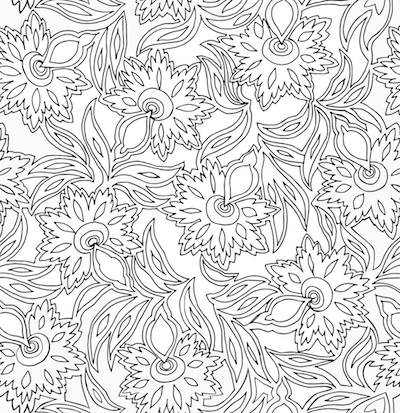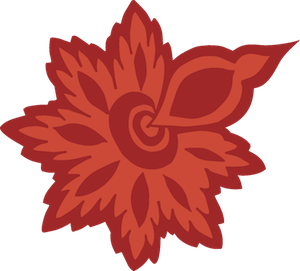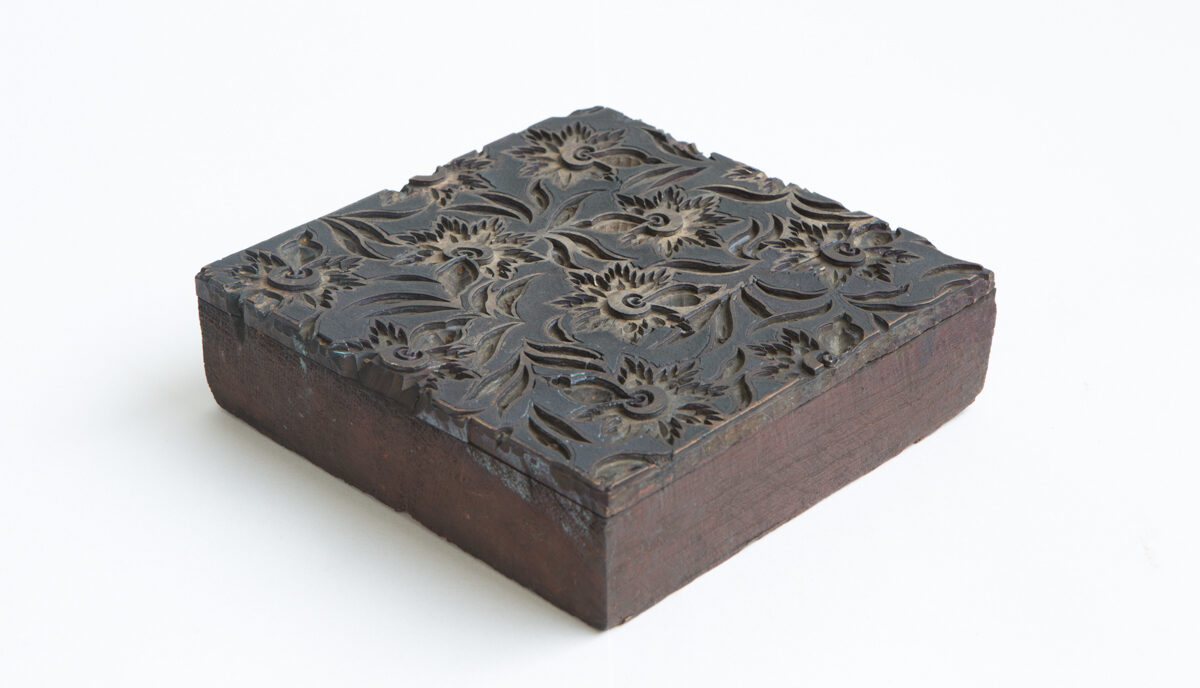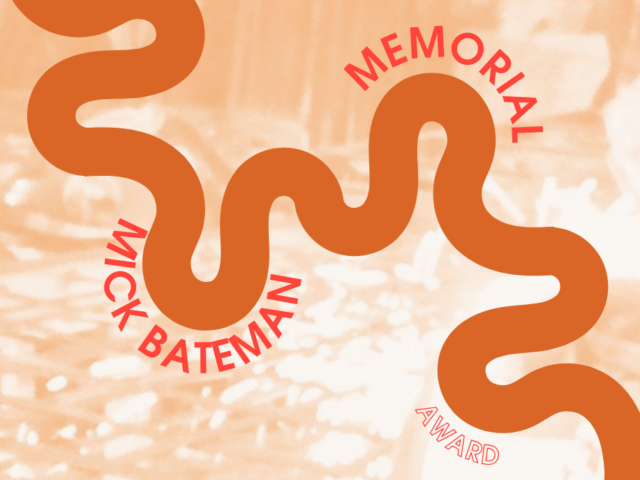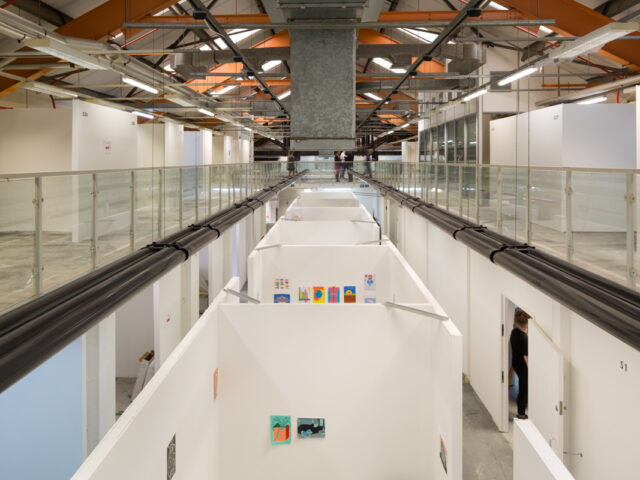Nunnery Archive | R.E. Littler Printing Block
Our Director of Arts & Events, Sophie, takes a look back at some of her favourite works from the Nunnery Gallery’s past exhibitions.
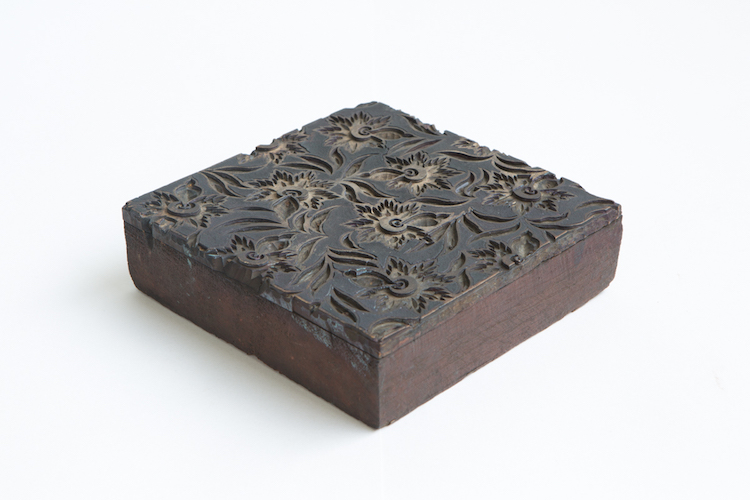
R. E. Littler printing block
pear wood, 19th century,
London Borough of Newham Heritage and Archive Service
The Raw Materials series of exhibitions are some of my favourite at the Nunnery Gallery, exploring the local industrial history of east London one material at a time. Materials had – and continue to have – a profound impact on innovation, design and craft along east London’s River Lea; from silk weavers, coloured dye inventors and timber yards to today’s technical innovators working at Here East’s Plexal. So far the only objects lucky enough to be featured in two Raw Materials exhibitions have been Newham Archive’s R. E. Littler printing blocks, which straddle both wood and textiles.
Made of pear wood, a darkly coloured timber that warms to a reddish hue, these solid blocks are intricately carved on one side, with the reverse indented with two rough handles for lifting. To handle the block is surprisingly heavy with chunky softly worn edges juxtaposing the sharply precise detail of the floral design. Carved by hand, the curved flicks of leaves and pointed tips of tiny zig-zagged petals are painstakingly defined, repeated uniformly across the square of the block’s face. Each flower and leaf is outlined twice with a different depth of engraving, giving detail and the possibility of embellishment to any finished design. Designed to be used for printing on fabric, R. E. Littler would have easily sourced calico and silks for printing in the River Lea Valley, as well as innovative new dyes with which to print. Though little-known-of today, in their heyday Littler’s print works produced most of the prestigious Liberty’s of London’s fabrics; hundreds of blocks like this one must have passed through the factory hands. This design became an emblem for our Raw Materials: Textiles exhibition: we digitalised its lines and reproduced it on the catalogue cover, on the wall (using our own newly-cut lino) and in fabric badges of the flower. We enlivened this long disused block’s personality, coaxing out its design to transform new surfaces. As a pattern it is full of movement and flow, the flower heads turning, the leaves dancing. Despite all our repetition we came no closer to guessing the flower its designer had in mind, a large protruding teardrop at its centre, but perhaps that only adds to its spell.

